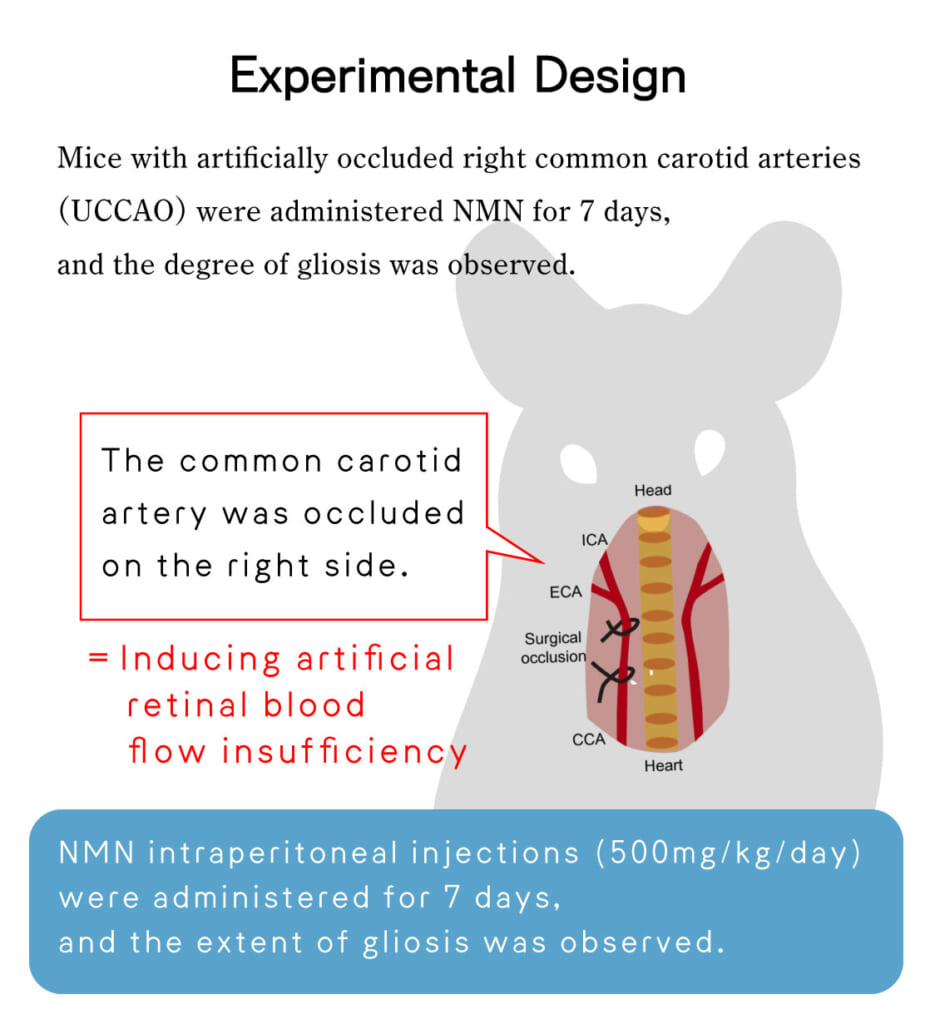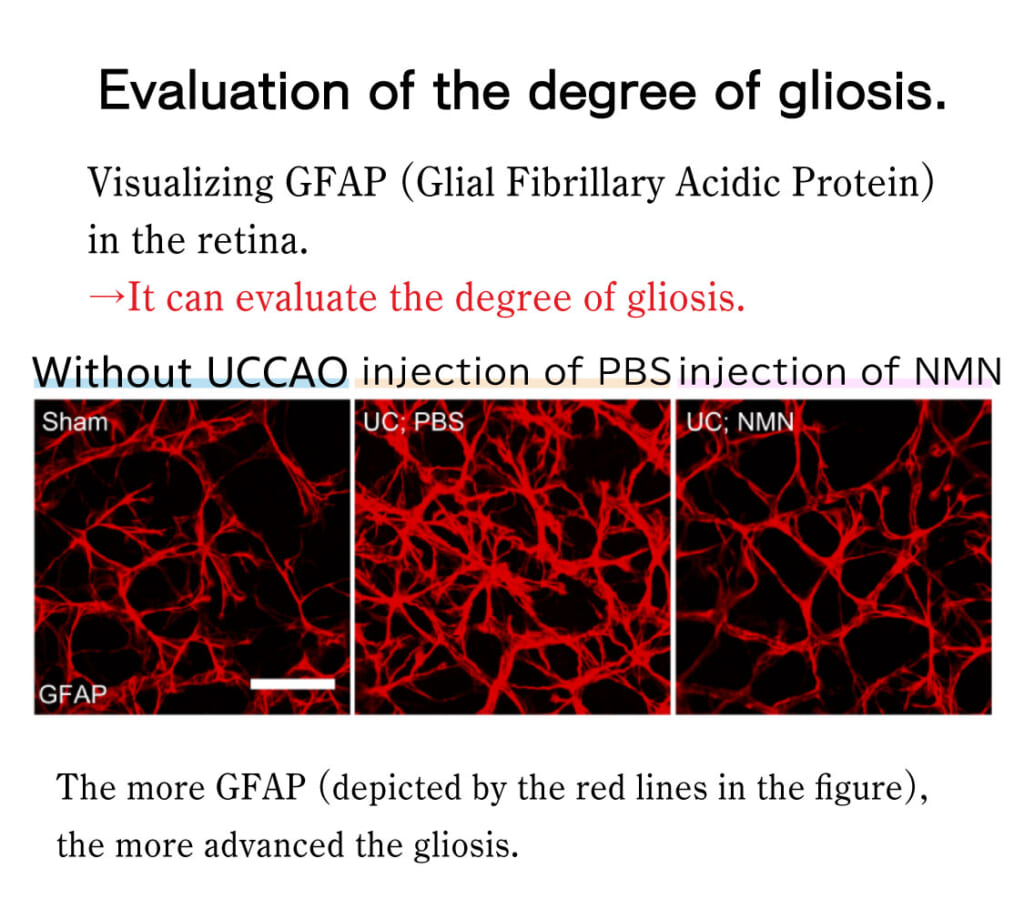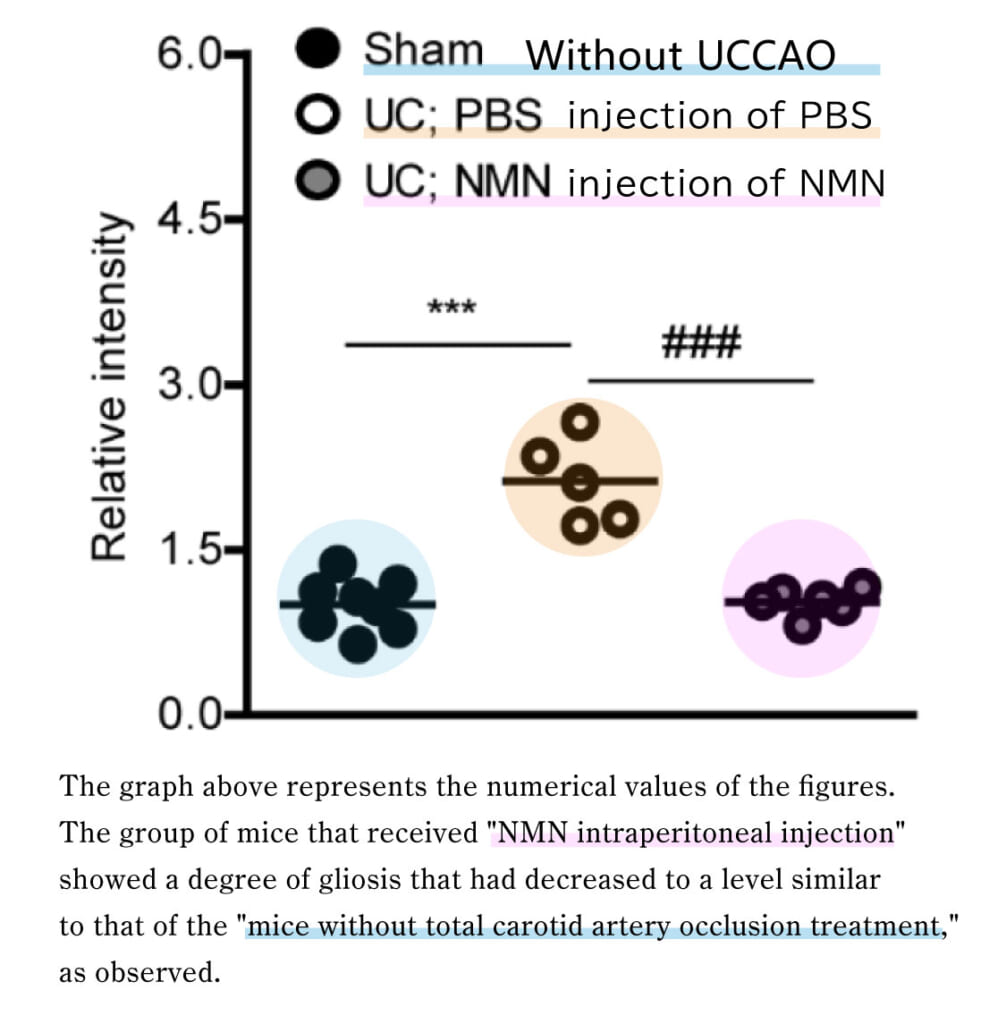Expected Visual Impairment Prevention and Improvement Effects of NMN 【Maintaining Healthy Retinal Blood Flow Contributes to the Prevention and Improvement of Visual Impairment】
【Maintaining Healthy Retinal Blood Flow Contributes to the Prevention and Improvement of Visual Impairment】
Retinal ischemia is said to occur as a result of aging, causing the degradation of retinal function and the accumulation of waste materials in retinal cells. When retinal function deteriorates, it becomes difficult to adjust the focus on the retina, leading to symptoms of “presbyopia,” where nearby objects appear blurred.
Furthermore, retinal ischemia is often associated with heart diseases, stenosis or occlusion of the carotid artery, and arteriosclerosis. Especially when the cause of retinal ischemia is related to cardiovascular diseases (conditions where abnormalities occur in blood vessels or muscles connected to the heart, resulting in inadequate blood supply to the heart), there is a possibility of severe visual impairment. Additionally, retinal ischemia is involved in various pathological processes (fundamental mechanisms causing diseases), such as oxidative stress, reactive gliosis (neuroglial disease)※, and retinal functional deficiencies. In other words, approaching these pathological processes to improve retinal blood circulation may prevent visual impairment.
※Gliosis (neuroglial disease): A condition where the nutritional cells for nerve cells, “glial cells,” proliferate at the site of significant damage to the brain or spinal cord, such as trauma, ischemia, or infection. It is believed to be involved in a wide range of diseases, including Alzheimer’s disease, multiple sclerosis, Parkinson’s disease, and amyotrophic lateral sclerosis. Particularly in the case of massive retinal gliosis (MRG), it may lead to blindness.
【Expected Visual Impairment Prevention and Improvement Effects of NMN】
This time, we introduce a paper on an experiment conducted to verify whether NMN, which has been expected as a promising treatment for retinal diseases, is beneficial for cardiovascular disease-induced retinal ischemia.
【Experiment Details】
In the experiment, the right carotid artery of mice was deliberately tied using various methods to induce occlusion, creating a state of artificial carotid artery occlusion (UCCAO). Daily injections of 500 mg of NMN per kilogram of body weight were administered into the abdominal cavity until the end of the experiment, and the condition of the retina was observed.

【Results Obtained from the Experiment】
The experiment revealed the following:
① Suppression of UCCAO-induced retinal functional impairment
② Reduction of pathological gliosis
③ Maintenance of retinal NAD+ levels
④ Upregulation of the expression of antioxidant molecules (nuclear factor erythroid 2-related factor 2; Nrf2)


These experimental results suggest that NMN therapy may be promising for suppressing retinal ischemic functional impairments caused by cardiovascular diseases.
 【Integrate NMN for an Active Daily Life Both Physically and Mentally】
【Integrate NMN for an Active Daily Life Both Physically and Mentally】
The above experimental results suggest that the intake of NMN in humans may improve retinal blood flow, contributing to the prevention of eye diseases, including visual impairment. Especially, eye problems can disrupt life, and as one ages, the problems become more complicated, requiring time for treatment. Therefore, it is recommended that older individuals actively take NMN, striving to maintain eye health and prevent eye diseases. Incorporate NMN into your life and start protecting eye health from the inside out.
【Reference】
Reference Paper: 【Nicotinamide Mononucleotide Protects against Retinal Dysfunction in a Murine Model of Carotid Artery Occlusion】
Literal Translation: Nicotinamide mononucleotide protects against retinal dysfunction in a mouse model of carotid artery occlusion
Journal Name/Volume: Int J Mol Sci. 2022 Nov 25;23(23):14711.
Paper URL: Click here to view (PubMed)
https://pubmed.ncbi.nlm.nih.gov/36499037/
